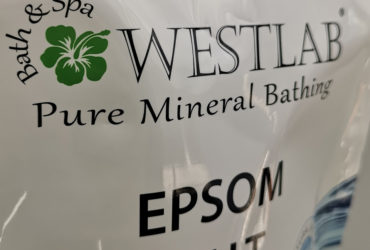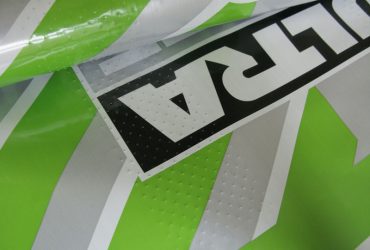Choosing the correct FIBC Bulk Bag for your needs
FIBC Bulk Bags are manufactured bespoke to our customers’ needs and so differ in both types and sizes. You, therefore, need to consider several factors.
1. Packed Product
One of the most important factors in FIBC production is understanding the product that will be packed. You need to consider the nature of the product, its size, form, density etc. If you are transporting fine particles you need to ensure a tight pack. Adding sift proof seams or opting for circular woven bags will stop potential contamination or product loss. If you are packing pharmaceutical grade products or food grade products, you will need to ensure your supplier has the infrastructure and BRC compliance in place. Click here for more information on Food Grade FIBC’s and Pharmaceutical Grade Bulk Bags.
You also need to be cautious of chemical substances that may be explosive. When dispersed in air, a majority of the fine powders used in the industrial sectors are explosive. If you are not sure, you can conduct a standard test for checking whether powders are explosive.
If the product is detected to be explosive, you will need to find out the Minimum Ignition Energy (MIE) of the dust material, which is the lowest electrostatic spark energy that could ignite a dust cloud.
2. The process of packing and the environment
Another factor that plays a crucial role when selecting an FIBC bulk bag is the evaluation of the packing process and surrounding when filling and discharging the bulk bag. You need to find out if flammable vapour or gases would be present when the bag is being filled and discharged. Besides, you also need to evaluate the ability of powdered particles inside the bag to generate or retain an electrostatic charge when it is being processed, filled or discharged. This will determine what Fabric type is used in the production of the FIBC Bulk Bags:
3. Fabric Type
Currently, four types of FIBCs are available in the market:
Type A:
Type A standard one tonne bags are manufactured using conventional woven polypropylene. They do not have any mechanism for dissipating static electricity and will not prevent the occurrence of highly energetic, and dangerous propagating brush discharges (PBD). As there are no requirements for static control in this type of bulk bag, there are no electrostatic tests specified in standards and no requirements for labelling. Labelling bulk bags as Type A is rarely done and bulk bags that are not labelled as Type B, Type C or Type D, can be assumed to be Type A.
Safe use:
- For transporting non-flammable products
Do not use:
- To transport flammable products
- If there a flammable gases in close vicinity to the bags.
Type B:
Type B bulk bags, like type A, are designed with no protective agents against the build-up of static electricity. However unlike type A FIBC’s, type B have a fabric material with a lower breakdown voltage. (< 6 kV) This bulk bag can be used for dry, combustible materials, but there must not be any flammable gasses in the area.
Safe use:
- For safely transporting dry, flammable powders
Do not use:
- If there are flammable gases in close vicinity to the bags
Type C:
Type C FIBCs are made of a conductive fabric. This conductivity is obtained through conductive yarns that are interweaved and connected together at an earthing-point. It is important the bulk bag remains earthed at all times. This FIBC can be used for combustible materials and within environments where flammable gasses are present.
Safe use:
- For safely transporting flammable powders
- If there are flammable gases in close vicinity to the bags
Do not use:
- If the grounding connection is not present or damaged
Type D:
Type D FIBCs are manufactured with specific anti-static fabric to give permanent discharge properties. These do not need to be earthed. However, machinery/staff, etc. in the immediate vicinity must be fully earthed. Restrictions on using the bag in humid environments are also in place.
Safe use:
- For safely transporting flammable powders
- If there are flammable gases in close vicinity to the bags
Do not use:
If bag is covered in conductive materials like water or grease
When to use Anti-static FIBCs:
| Minimum Ignition Energy of Dust | Non-Flammable Atmosphere | Explosive Dust Atmosphere | Explosive Gas and Vapour Atmosphere |
| MIE > 1000 mJ | A,B.C,D | B,C,D | C,D |
| 1000 mJ > MIE 3 mj | B,C,D | B,C,D | C,D |
| MIE < 3 mJ | C,D | C,D | C,D |
For more information on Conductive FIBC’s, click here
4. Thinking about Liners
A liner is often used along with FIBC bag. It can either come embedded inside the FIBC or it can be loosely attached. A liner protects both – the FIBC and also the product you put in the bag. Like FIBCs, there are various types and varieties in liners. You need to be sure of the electrostatic properties of the liner material, its surface sensitivity, thickness, resistance to ground-able point.
5. Size and Other Important Specifications of the FIBC
Needless to say, you need to buy FIBC of an apt size. Its width should fit into your carrier. It should have strong lifting loops that can hold the weight of the filled bags. Also, check the discharge outlet of the bag when selecting FIBC. The discharge outlet should be large enough to ensure smooth pouring of the material.
Selecting the right FIBC will help to ensure safe and smooth transport of material. It will also help to make the shipping process convenient and lessen the packaging and transport cost. At Rosenflex, we consider it our responsibility to guide our clients in selecting most suitable FIBC bag.
For more information on FIBC Bulk Bags, get in touch with our experts on 01206 266850, or email: sales@rosenflex.com








